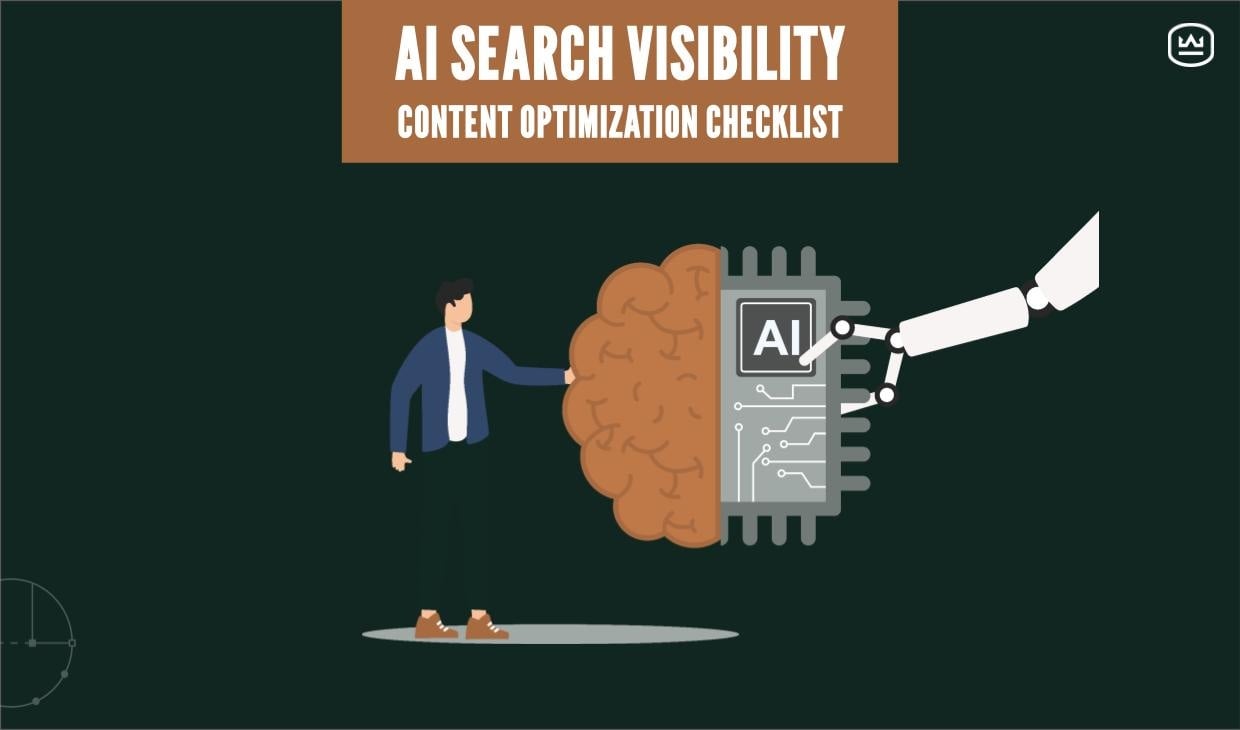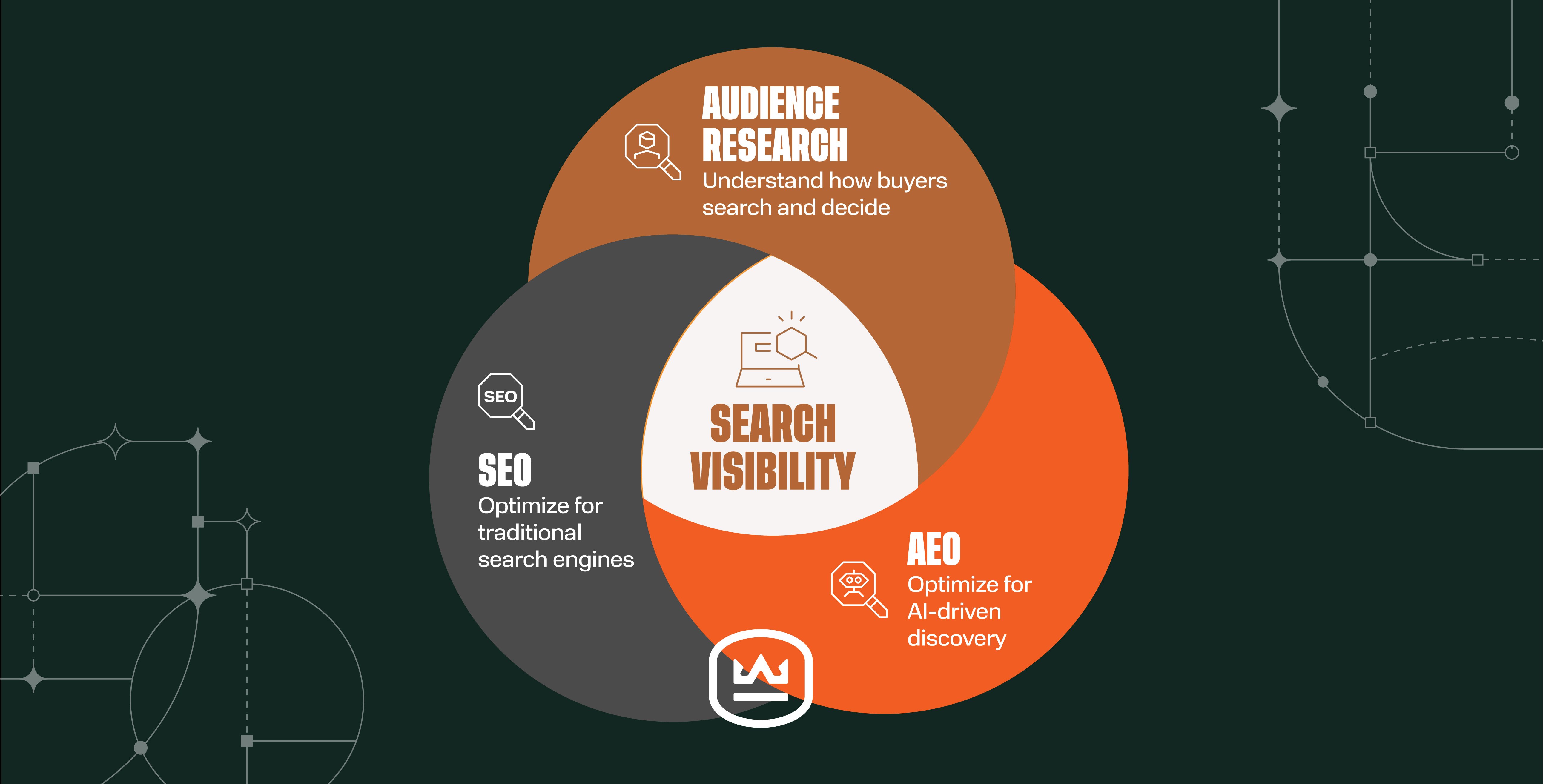How to Develop a B2B Buyer Persona for Industrial Marketing & Sales
Written by
The buyer persona is a foundational tool used by marketers. These semi-fictional characters represent the individual people your sales team would love to meet more than anyone else, and they help you personalize your marketing content to attract, engage, and delight them.
In fact, 94% of marketers say that personalization increases sales. Unfortunately, only 35% say they actually personalize their customers’ experiences.
Having accurate buyer personas can help change that. The content you create, the channels you choose, and the voice and tone of your approach are all driven by an understanding of your target personas. It’s critical to invest time and effort into understanding their problems, questions, challenges, goals, and motivations.
Buyer personas are a critical aspect of B2B industrial marketing, and if you craft them well, your program will be better for it.
What is a Buyer Persona?
B2B buyer personas are semi-fictional representations of the individual people your sales team would love to talk to more than anyone else about your products or services. Buyer personas are based on detailed data — demographics, aspirations, professions, and more — and when you get them right, they help everyone on your marketing and sales teams align and work together toward your goals.
How to Create a Buyer Persona
In B2B manufacturing marketing, target personas start with pinpointing your ideal customer — and that starts by identifying someone with a problem, challenge, or pain point you can solve. You can begin to narrow down the characteristics of that perfect buyer by looking closely at your existing customers and reflecting on your experiences with them.
- What are their roles?
- How do they evaluate purchasing decisions?
- What keeps them up at night?
Two effective methods you can use to start gathering customer persona information are interviews and industry research.
Conduct Interviews
You can learn a lot about your B2B target audience by reaching out to your teammates who interact directly with customers and prospects. Gather feedback about which topics commonly recur in conversations, including:
- What are customers’ priorities and goals?
- What does winning look like for customers?
- What are customers’ biggest challenges and obstacles to success?
- What are their current and future needs?
- Do they have regrets about past decisions or mistakes?
- What marketing messages have resonated with customers?
Along with your colleagues’ perspectives, you can go straight to the source and conduct customer interviews. Choose a mix of new and established customers, and ask questions similar to those you asked your teammates. Additional questions might include:
- How do you learn about industry news and trends? (blogs, associations, trade pubs, colleagues, LinkedIn, etc.)
- How do you research vendors or products? (Google, peers, industry websites, social networks, etc.)
- How did you find out about us?
- Why did you choose to work with us?
- Why do you continue to work with us?
A word of advice: before reaching out to others, make sure your internal sales and marketing teams are on the same page. The organizations that have the greatest ROI are those where the sales and marketing teams are in lock-step with each other. They collaborate and ideate together to conduct interviews and define their buyer personas and target markets. Then, they execute a plan together.
If you need to strengthen the bond between those two departments, start by using our helpful guide to align marketing and sales.
Conduct Industry Research
You can look at industry research as a two-stage process. First, learn as much as you can about the industry in general. Then, take a look at people as individuals.
A review of top industry publications and websites will get you up to speed on universal needs and challenges, but don’t stop at journals and academic reports. Explore what’s trending on social media within the industry. Who’s chiming in on conversations? Unfiltered insights on social media might do more to inform your marketing campaigns and content strategies than you think.
Do some digging, talk with teammates, and research online to uncover as much data about the real, live people who serve in the roles of your target personas. For example:
- Educational level and professional experience
- Titles, responsibilities, and accountabilities
- Potential customers’ key motivators
- Short- and long-term goals
- What makes them hesitate to purchase your product or service
- Personality characteristics
Use Tools & Technology
Several tools have been developed to help streamline the buyer persona process. They provide data and insights that might be difficult to glean on your own. Not surprisingly, artificial intelligence (AI) is lending a helping hand. Below are a few of our favorite buyer persona tools that work for both B2B and B2C buyer personas.
Delve.ai
Ever wish you could see behind the curtain to know what your customers and target personas are doing? Delve.ai is an AI-powered persona generator that can show which companies visit your website and what they’re looking at, and can even send notifications. It helps you build personas based on data from Google Analytics, social media, podcasts, and other public sources. You can also explore buyer segments based on online behaviors, demographics, geography, and transactions.
Sparktoro
Sparktoro is a market research software that helps organizations identify where their audience spends time and, more importantly, where they focus their attention. Your target audience shares their interests online, but finding it and parsing through it is nearly impossible. Spartoro crawls 80 million social profiles and web pages to reveal what your audience reads, listens to, watches, follows, shares, and talks about.
HubSpot Make My Persona Tool
HubSpot has a free, interactive tool that walks you through each step of the process. It asks targeted questions to help you determine your personas’s characteristics. When finished, you’ll be presented with a customizable persona document editor where you can add or remove sections based on your needs. It’s great if you already have customer data to plug in.
Buyer Persona Templates
It’s helpful to have a consistent format for filling in your persona information (name, role, industry, goals, pain points, etc.). We created a helpful Buyer Persona Worksheet & Template that you can fill in to map your buyer’s journey. Be sure to get your copy below to help keep everything organized.
Get the Buyer Persona Worksheet & Template
It’s important to understand there’s no one “best” way to structure and organize target personas. But the type of buyer persona classification you choose should help you speak directly to their needs and pain points.
Three Types of B2B Buyer Personas
We typically use three primary ways to classify buyer personas:
- Vertical market
- Functional role
- Decision-making or influencing power
1. Organize Personas by Vertical Market
If your products or services vary by customer industry, organizing your personas by vertical market makes good sense. For example, if you’re a manufacturer of industrial parts, you might group personas by automotive, medical, or consumer verticals, or even the type of facility they work in (e.g., continuous manufacturing, OEM, or machine shops).
From there, you can further refine what matters most to each type of customer. A plant manager in an automotive manufacturing business has different needs from a manager working in consumer goods. You can use tools like the Standard Industrial Classification (SIC) System and North American Industry Classification System (NAICS) search tools to get an understanding of each part of an industry’s landscape.
2. Organize Personas by Job Title, Function, or Role
If your sales team has conversations with target customers in various business functions or roles, you’ll likely want to organize personas around that structure. This is a particularly common practice for engineering or technology firms.
Why? The conversation you have with a marketing director may be very different from one you’d have with a technology director or CEO. Their priorities and goals differ, so speaking their languages means talking about pain points each individual can relate to.
For example, if you’re a SaaS company, you’ll find that the CEO of a startup cares a lot about cash flow and how your services can help the business thrive and grow. Their technology director, on the other hand, probably wants to know more about how your services compare with competitors in terms of data reliability, support, and user experience.
3. Organize Personas by Decision-making & Influencing Authority
In any marketing or sales conversation, it’s crucial to know if you have the right people in the room (or on Zoom). More often than not, your primary audience is made up of influencers — the mid-level managers, product development engineers, or vendor relationship people searching for solutions to present to their stakeholders.
If you target influencers, your marketing efforts need to provide the answers they’re looking for so they can, first of all, look smart in front of their bosses. From there, you’ll continue to nurture them down their buyer journey path as they move through your marketing and sales process.
Sometimes we refer to these folks as “gatekeepers.” Especially in technical situations like engineering, they often hold veto power on vendor relationships. If this is a situation you face regularly, organizing your personas around influencers and decision-makers makes sense.
No matter the structure you use to classify your B2B buyer personas, remember that inbound marketing is never just about your product. At the top of the funnel, your job of creating content is to address their problems, challenges, and questions to raise awareness.
Once you’ve sparked awareness, your content should offer solutions for targets in the consideration stage. As they move toward the bottom of your sales funnel toward the decision stage, your content will show them what’s superior about your product or service.
Above all, your marketing content needs to be helpful to those individuals you target, and relevant to where they are on the path of their buyer’s journey.
Crafting Buyer Personas? Show Your Work
Bring your marketing personas to life with as much detail as possible. After all, they represent the people you need to reach with your big-picture and tactical content marketing strategies.
A methodical, detailed approach is key to crafting effective target personas, and it starts with understanding and documenting the journeys your customers have taken before and after purchase.
Remember, we simplified the process with our free Buyer’s Journey Worksheet. This template will take you step-by-step down your best prospects’ path from Awareness to Consideration, toward Decision and Customer Experience. Click the link below to start today.
Subscribe To Our Blog
Information. Insights. Ideas. Get notified every time a new Weidert Group blog article is published – subscribe now!
You May Also Like...

Search Engine Optimization
How Falcon Rebuilt Industrial AI Search Visibility in 2025

Search Engine Optimization
The New Search Visibility Checklist for AI-Era Content Marketing

Search Engine Optimization
SEO Isn’t Dead. It’s Evolving: How B2Bs Can Stay Visible in the Age of AI
Accelerate Your Growth with
Weidert Group
If you’re ready to explore a partnership, request a personalized consultation with our team.

